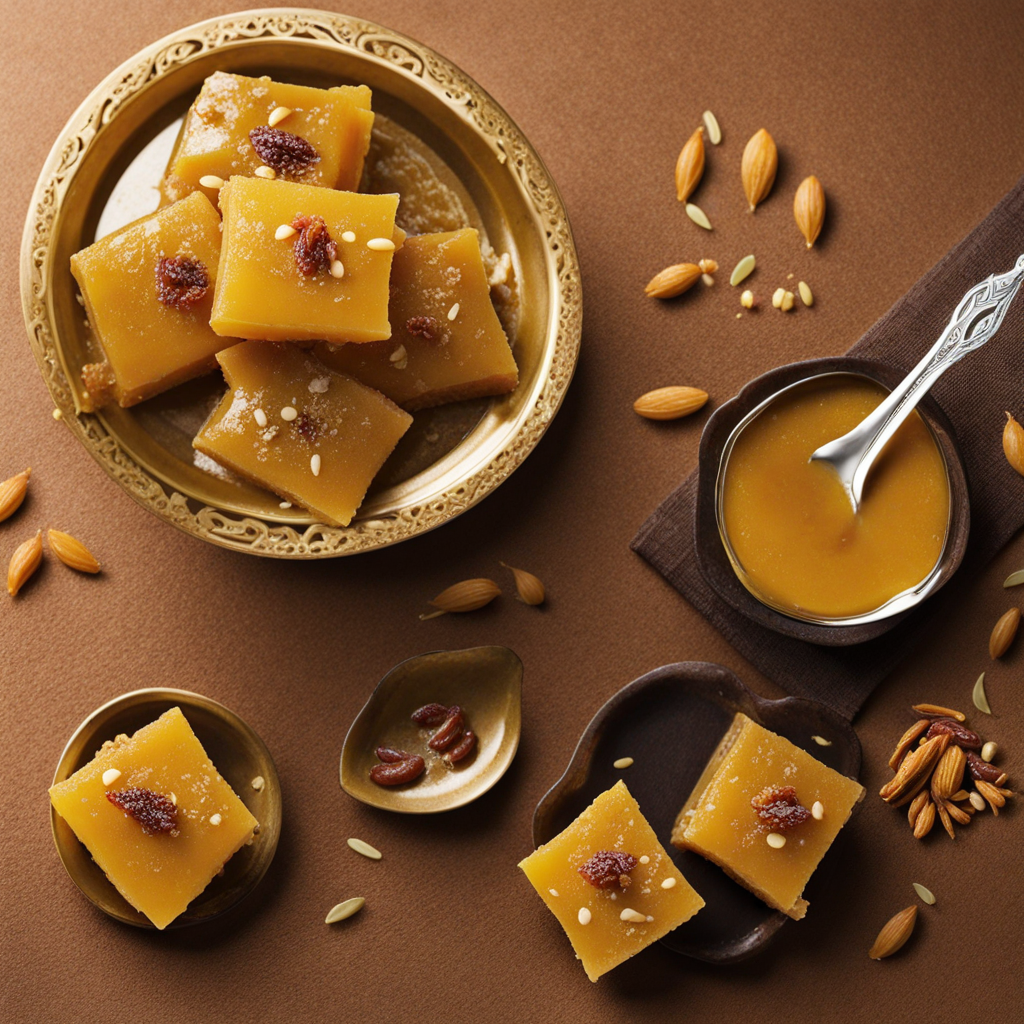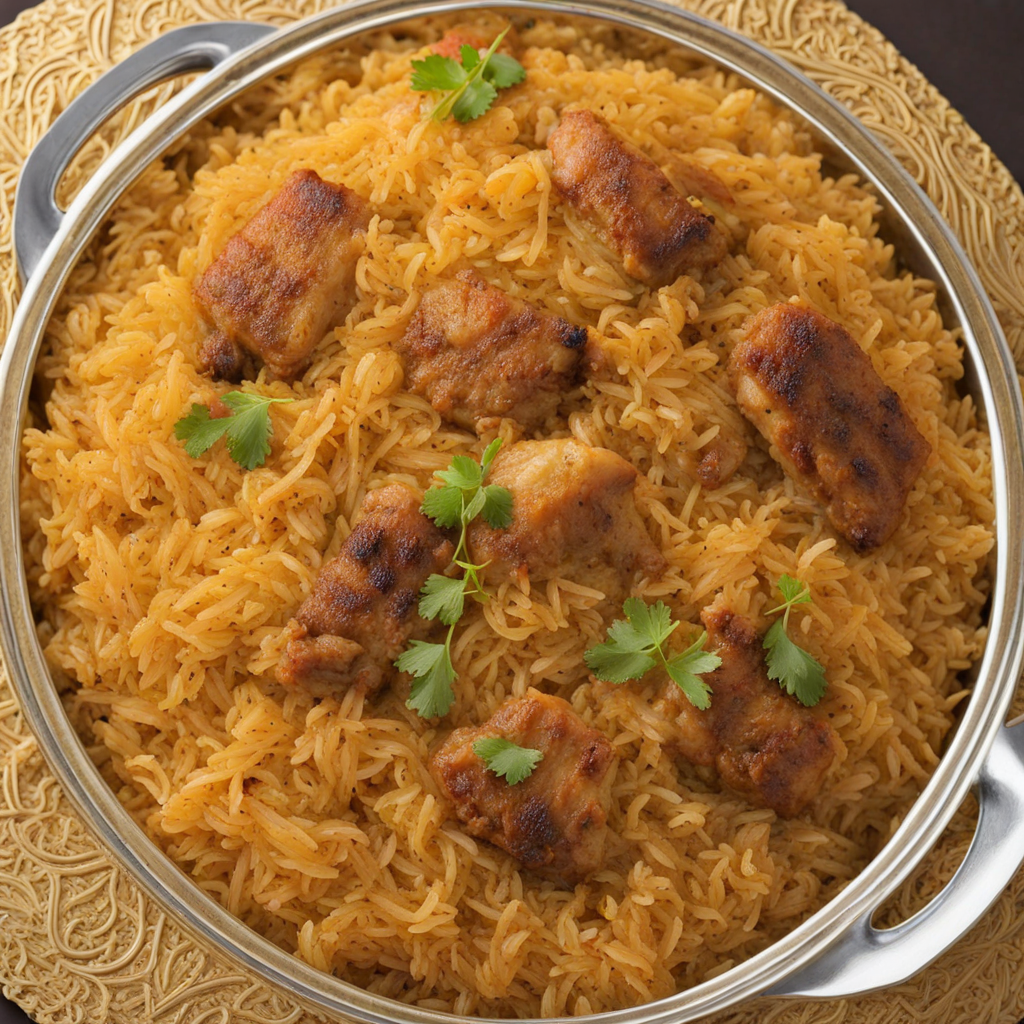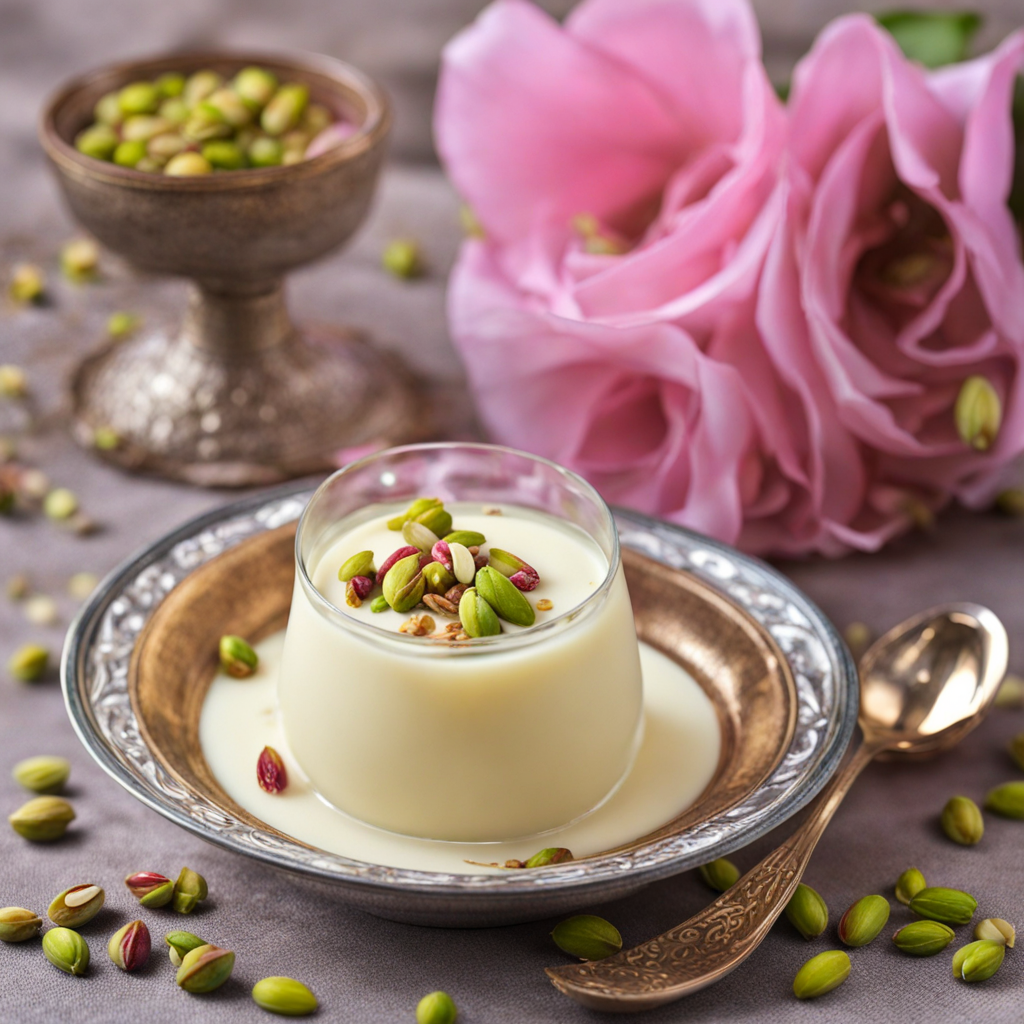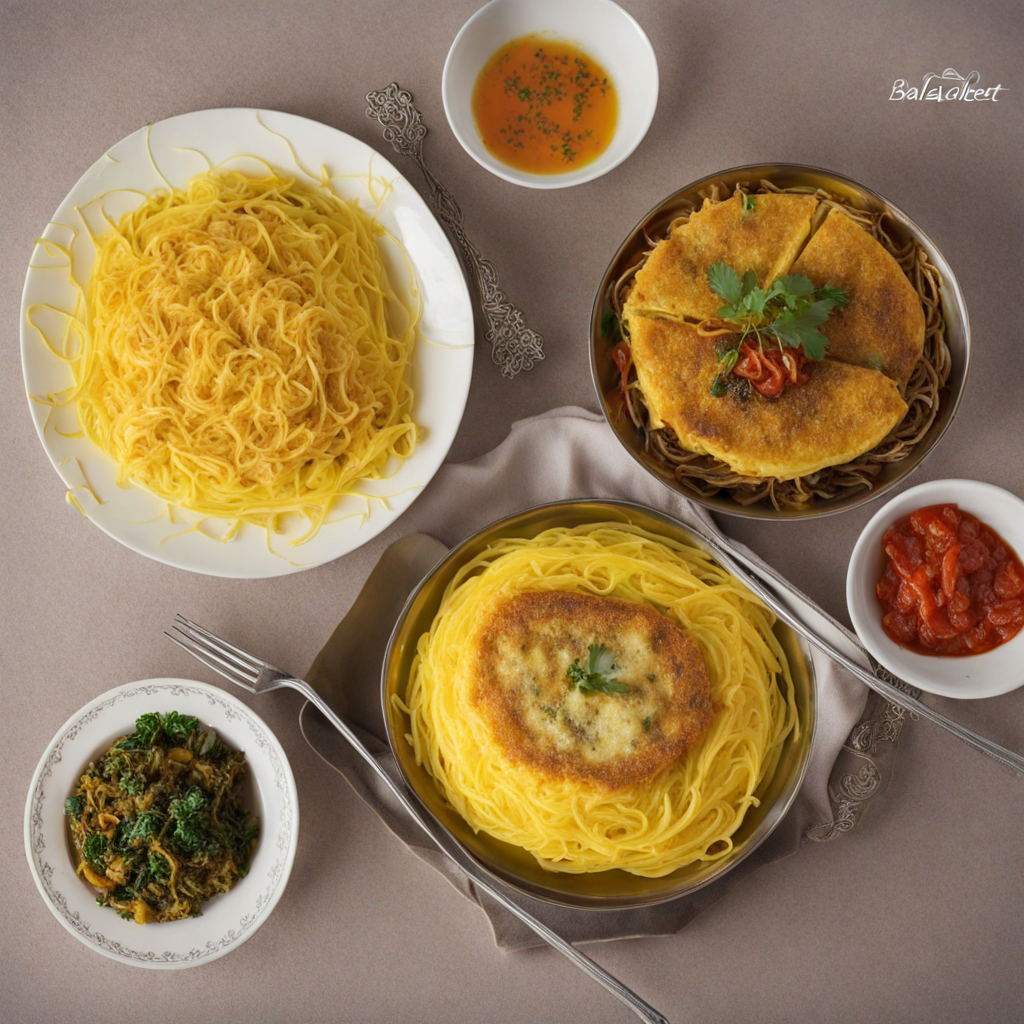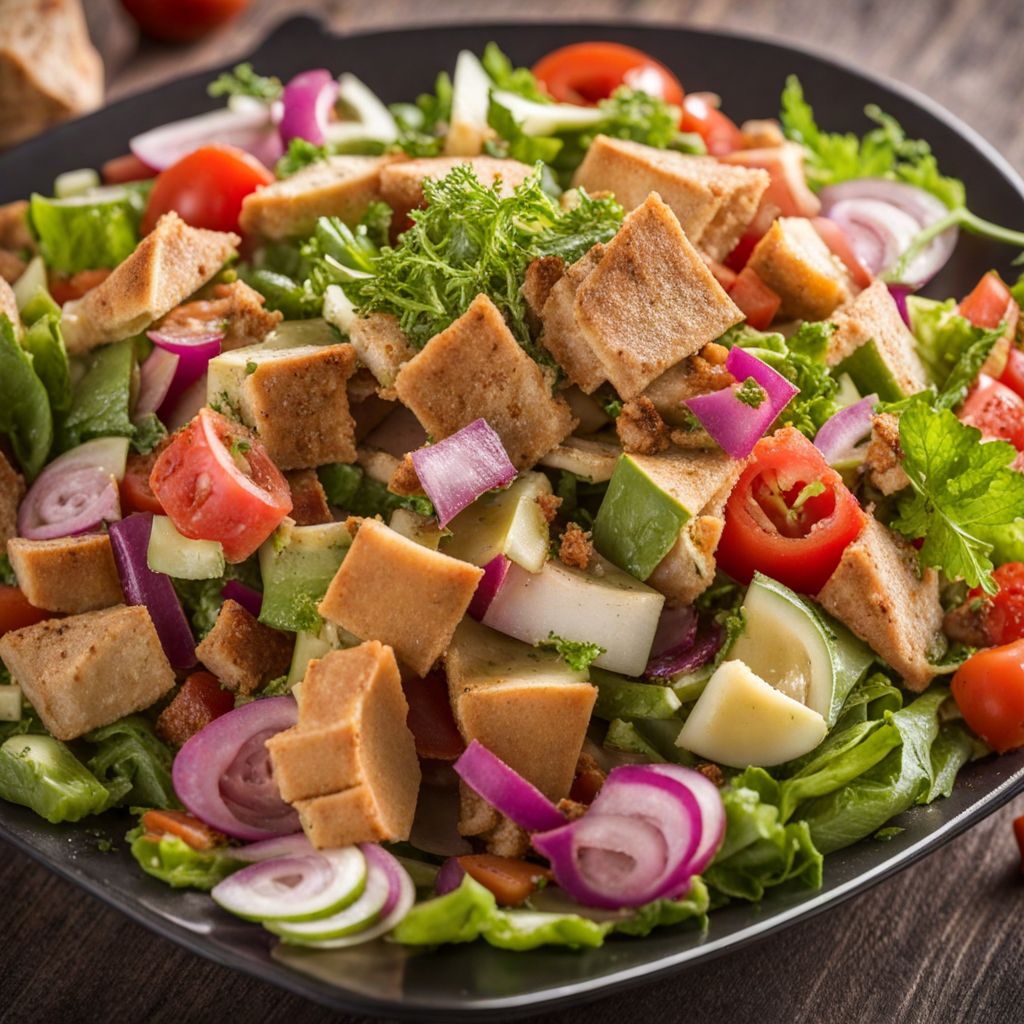Halwa
Halwa, a beloved dessert from Kuwait, is a delightful confection that tantalizes the taste buds with its unique texture and rich flavors. This sweet treat is often made from a combination of semolina, sugar, ghee, and various flavorings, creating a soft, pudding-like consistency that melts in your mouth. The golden hue of the halwa is visually appealing, often enhanced with the addition of saffron or turmeric, which not only adds to its beauty but also infuses it with a subtle aromatic essence. The preparation of Kuwaiti halwa is a labor of love, typically involving slow cooking to achieve the perfect consistency. The semolina is toasted until it reaches a light golden color, which imparts a nutty flavor that complements the sweetness. Nuts, such as almonds or pistachios, are often mixed in or sprinkled on top, offering a satisfying crunch that contrasts with the smooth base. Additionally, rose water or cardamom can be added to elevate the flavor profile, providing a fragrant and exotic twist that makes each bite a sensory experience. Halwa is not just a dessert; it's a centerpiece of celebration in Kuwaiti culture, often served during special occasions and gatherings. It is typically cut into squares or diamond shapes and presented on ornate platters, inviting guests to indulge. The experience of enjoying halwa is enhanced when paired with traditional Arabic coffee or tea, creating a harmonious balance between sweetness and warmth. For anyone looking to explore new tastes, Kuwaiti halwa offers a sweet journey into the heart of Middle Eastern culinary traditions.
How It Became This Dish
Origin of حلوى حلوى, a traditional sweet treat in Kuwait, has its roots deeply embedded in the rich tapestry of Middle Eastern culinary heritage. The name "حلوى" itself derives from the Arabic word for "sweet." Its origins can be traced back centuries, influenced by various cultures that traversed the region, including Persian, Ottoman, and Indian culinary practices. The art of making حلوى was not merely about creating desserts; it was a reflection of the social and economic conditions of the time, showcasing the available ingredients and the skills of local artisans. The traditional حلوى is often made from a base of semolina, sugar, and ghee, flavored with spices such as cardamom and saffron. This combination of ingredients can be found in various forms across the Middle East, but Kuwaiti حلوى stands out due to its unique local adaptations and the inclusion of nuts like pistachios and almonds, which were historically significant in the trade routes that passed through Kuwait. \n\n Cultural Significance In Kuwaiti culture, حلوى holds a special place not just as a dessert but as an integral part of social gatherings and celebrations. It is commonly served at weddings, Eid festivities, and family gatherings, symbolizing hospitality and generosity. The presentation of حلوى is often elaborate, reflecting the importance of aesthetics in Kuwaiti hospitality. Serving a beautifully arranged plate of حلوى to guests is a sign of respect and an expression of the host's social standing. Moreover, حلوى is more than just a treat; it carries with it stories and traditions that have been passed down through generations. Families often have their own recipes, with each version carrying a unique twist that reflects personal tastes and regional variations. This makes حلوى not just a dish, but a repository of family heritage, connecting generations through shared culinary experiences. \n\n Development Over Time As Kuwait underwent significant socio-economic changes, particularly during the 20th century, the methods and ingredients used in making حلوى also evolved. The discovery of oil transformed the nation, leading to an influx of wealth and the introduction of new ingredients and cooking techniques. While traditional recipes remained cherished, modern variations emerged, incorporating chocolate, fruit purees, and even international flavors that appealed to younger generations. The proliferation of supermarkets and food markets in Kuwait allowed for greater accessibility to imported ingredients, which further diversified the landscape of حلوى. Chefs began experimenting with fusion concepts, blending traditional Kuwaiti flavors with global culinary trends. This era of culinary experimentation not only reflects the changing tastes of the populace but also showcases Kuwait as a melting pot of cultures, where traditional and modern culinary practices coexist. \n\n Popular Types of حلوى Among the most popular types of حلوى in Kuwait is "حلوى الجزر," or carrot halwa. This dish is made from grated carrots, cooked with milk, sugar, and ghee, then garnished with nuts and sometimes flavored with cardamom. Carrot halwa is particularly favored during the colder months, often enjoyed warm and served alongside Arabic coffee. Another beloved variant is "حلوى التمر," or date halwa, which pays homage to the region's agricultural roots. Made primarily from dates, nuts, and spices, this sweet treat not only highlights the local produce but also serves as a nutritious snack. Dates, being a staple in Kuwaiti cuisine, have been historically significant, symbolizing abundance and prosperity. \n\n Modern Influence and Globalization With the advent of globalization, the influence of international culinary trends has led to a renaissance in the production of حلوى. Kuwaiti chefs and home cooks alike have begun to showcase their creations on social media platforms, allowing for a wider audience to appreciate and engage with traditional Kuwaiti desserts. This newfound visibility has sparked a renewed interest in local culinary heritage, prompting younger generations to reconnect with their roots through cooking. Food festivals and culinary competitions have also played a pivotal role in promoting حلوى, as chefs vie to create innovative presentations and flavors that pay homage to traditional recipes while incorporating contemporary elements. These events foster a sense of community and pride in Kuwaiti culture, encouraging both locals and visitors to explore the richness of Kuwaiti cuisine. \n\n Conclusion The journey of حلوى in Kuwait is a testament to the resilience and adaptability of culinary traditions. As Kuwait continues to evolve, so too does its food culture, with حلوى standing as a sweet reminder of the past while embracing the future. Through its rich flavors, cultural significance, and historical roots, حلوى not only nourishes the body but also feeds the soul, creating connections between generations and celebrating the essence of Kuwaiti identity. As it continues to be a beloved part of the culinary landscape, حلوى will undoubtedly remain a cherished symbol of hospitality and tradition for years to come.
You may like
Discover local flavors from Kuwait


